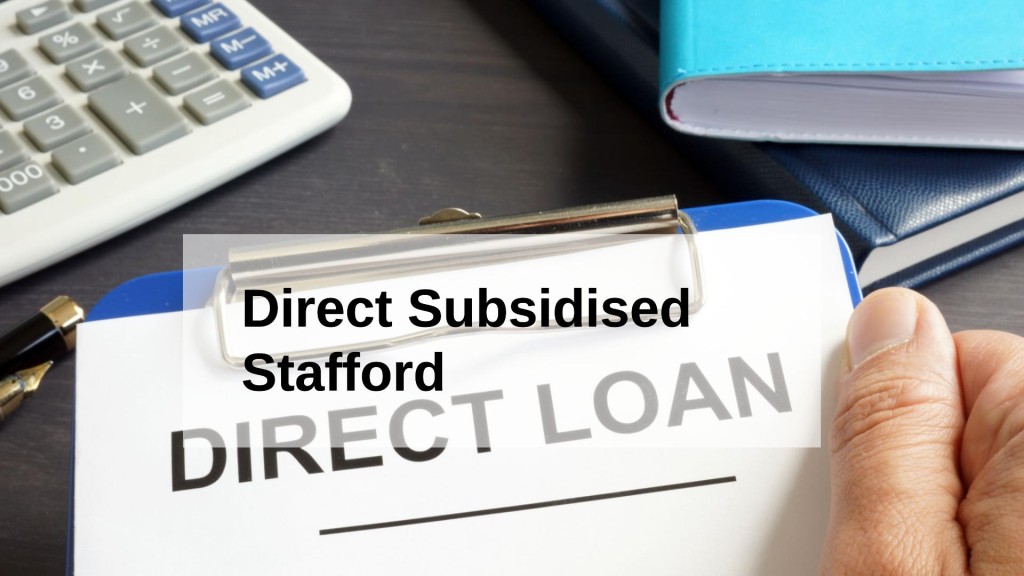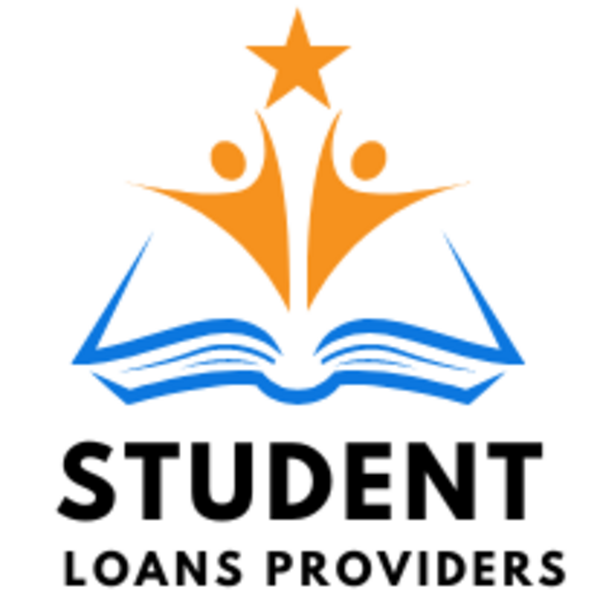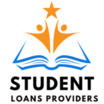Survivors’ and Dependents’ Educational Assistance Program
Explore educational assistance for survivors and dependents. Learn about benefits, eligibility, and how to apply for this valuable program

Discover Direct Subsidized Stafford loans - government aid for undergraduates with financial need. Get low-interest rates & flexible repayment options.
Student loans are a common avenue for financing higher education, and among the various types available, the Direct Subsidized Stafford Loan stands out as a beneficial option for many students. In this comprehensive guide, we will delve into the details of Direct Subsidized Stafford Loans, exploring their features, advantages, eligibility criteria, application process, and tips for responsible borrowing.
Table of contents [Show]
The Direct Subsidized Stafford Loan is a federal student loan offered by the U.S. Department of Education. It is designed to provide financial assistance to undergraduate students with demonstrated financial need. One of the key features that sets this loan apart is the interest subsidy, meaning the government pays the interest on the loan while the borrower is in school at least half-time, during the grace period, and during deferment.
Interest Subsidy: As mentioned, the government covers the interest on Direct Subsidized Stafford Loans during specific periods, reducing the overall cost of borrowing for students.
Fixed Interest Rate: Direct Subsidized Stafford Loans come with a fixed interest rate, providing borrowers with stability and predictability in their repayment planning.
Financial Need Requirement: To qualify for a Direct Subsidized Stafford Loan, students must demonstrate financial need, as determined by their Free Application for Federal Student Aid (FAFSA).
Limited Loan Amounts: There are annual and aggregate limits on the amount of Direct Subsidized Stafford Loans a student can borrow. These limits vary based on the student's year in school and dependency status.
To be eligible for a Direct Subsidized Stafford Loan, students must meet certain criteria:
Demonstrated Financial Need: Students must show financial need, which is determined by their cost of attendance minus expected family contribution.
Undergraduate Status: Direct Subsidized Stafford Loans are available only to undergraduate students pursuing a degree or certificate.
Enrollment in an Eligible Program: Borrowers must be enrolled at least half-time in a program that leads to a degree or certificate at a qualifying institution.
U.S. Citizenship or Eligible Noncitizen Status: Borrowers must be U.S. citizens, nationals, or eligible noncitizens.
The process of obtaining a Direct Subsidized Stafford Loan involves several steps:
Submit the FAFSA: The first step is to complete the Free Application for Federal Student Aid (FAFSA). This form is used to determine the student's eligibility for federal student aid, including Direct Subsidized Stafford Loans.
Receive Financial Aid Offer: After submitting the FAFSA, students receive a financial aid offer from their school, which may include a Direct Subsidized Stafford Loan if they qualify.
Accept the Loan: If the student decides to accept the offered loan, they must follow the school's instructions to complete the required documents, such as a Master Promissory Note (MPN) and entrance counseling.
Loan Disbursement: Once all requirements are met, the loan funds are disbursed directly to the school to cover tuition, fees, and other educational expenses.
Interest Subsidy: The most significant advantage is the interest subsidy, which can save borrowers money over the life of the loan.
Fixed Interest Rate: The fixed interest rate provides borrowers with predictability, making it easier to budget for loan repayment.
No Credit Check: Direct Subsidized Stafford Loans do not require a credit check, making them accessible to students with limited or no credit history.
Grace Period: Borrowers are granted a grace period of six months after leaving school before they must begin repaying the loan.
While Direct Subsidized Stafford Loans offer valuable benefits, it's essential for borrowers to approach student loans responsibly. Here are some tips:
Borrow Only What You Need: Determine your actual educational expenses and only borrow what is necessary to cover those costs. Avoid taking the maximum loan amount if it exceeds your requirements.
Understand Repayment Terms: Familiarize yourself with the terms of repayment, including the interest rate, grace period, and available repayment plans.
Consider Future Earnings: Keep in mind your expected future earnings in your chosen field. Ensure that your loan debt is manageable based on your anticipated income after graduation.
Explore Scholarships and Grants: Look for scholarships and grants first, as these do not require repayment. Only turn to loans after exhausting these options.
Repayment of Direct Subsidized Stafford Loans typically begins six months after the borrower graduates, leaves school, or drops below half-time enrollment. Several repayment plans are available, including standard repayment, income-driven repayment, and extended repayment. Borrowers can choose the plan that best fits their financial situation.
Direct Subsidized Stafford Loans provide a valuable financial resource for eligible undergraduate students, offering an interest subsidy and fixed interest rates. By understanding the features, advantages, eligibility criteria, and application process, students can make informed decisions about their education financing. Remember, responsible borrowing and careful financial planning are crucial for a successful and manageable student loan experience.
What is a Direct Subsidized Stafford Loan?
A Direct Subsidized Stafford Loan is a federal loan available to undergraduate students with demonstrated financial need. The U.S. Department of Education pays the interest while you're in school at least half-time, during the grace period, and during deferment periods.
Who is eligible for a Direct Subsidized Stafford Loan?
Undergraduate students who demonstrate financial need are typically eligible for Direct Subsidized Stafford Loans.
How do I apply for a Direct Subsidized Stafford Loan?
You can apply for a Direct Subsidized Stafford Loan by completing the Free Application for Federal Student Aid (FAFSA).
What is the maximum amount I can borrow with a Direct Subsidized Stafford Loan?
The amount you can borrow depends on your grade level, dependency status, and other factors. There are annual and aggregate limits set by the Department of Education.
Is there a deadline to apply for a Direct Subsidized Stafford Loan?
The deadline to apply for a Direct Subsidized Stafford Loan is determined by your school's financial aid office. Make sure to check with them for specific deadlines.
What is the interest rate on a Direct Subsidized Stafford Loan?
The interest rates for Direct Subsidized Stafford Loans are set by Congress and can vary from year to year. It's important to check the current rates on the official federal student aid website.
Do I need to start repaying my Direct Subsidized Stafford Loan while I'm in school?
No, repayment typically begins six months after you graduate, leave school, or drop below half-time enrollment.
Can I consolidate my Direct Subsidized Stafford Loan with other federal loans?
Yes, you can consolidate your Direct Subsidized Stafford Loan with other eligible federal loans through the Direct Consolidation Loan program.
Are there any fees associated with a Direct Subsidized Stafford Loan?
Yes, there is a loan fee deducted proportionately from each disbursement of your loan.
Can I use a Direct Subsidized Stafford Loan to pay for expenses other than tuition?
Yes, you can use the loan funds to pay for tuition, fees, room and board, books, supplies, and other educational expenses.
What happens if I don't qualify for a Direct Subsidized Stafford Loan?
If you don't qualify for a Direct Subsidized Stafford Loan, you may still be eligible for other types of federal student aid, such as unsubsidized loans or grants.
Can I receive a Direct Subsidized Stafford Loan if I've already received one in the past?
Yes, as long as you continue to demonstrate financial need and meet all other eligibility criteria, you can receive Direct Subsidized Stafford Loans for multiple academic years.
Is there a credit check required for a Direct Subsidized Stafford Loan?
No, there is no credit check required for a Direct Subsidized Stafford Loan.
Can I cancel a Direct Subsidized Stafford Loan if I change my mind?
Yes, you can cancel all or a portion of your loan within a certain timeframe after disbursement. Contact your school's financial aid office for instructions on how to cancel.
What is the grace period for a Direct Subsidized Stafford Loan?
The grace period for a Direct Subsidized Stafford Loan is typically six months after you graduate, leave school, or drop below half-time enrollment.
Are Direct Subsidized Stafford Loans forgiven under any circumstances?
Direct Subsidized Stafford Loans are typically not eligible for forgiveness programs like Public Service Loan Forgiveness (PSLF). However, there are other forgiveness options available for certain professions or situations.
Explore educational assistance for survivors and dependents. Learn about benefits, eligibility, and how to apply for this valuable program
Discover the benefits of the Montgomery GI Bill for military service members. Get education and training assistance. Learn more now
Unlock your future with the Post 9/11 GI Bill. Get education benefits for veterans. Pursue your dreams with tuition, housing, and more covered

